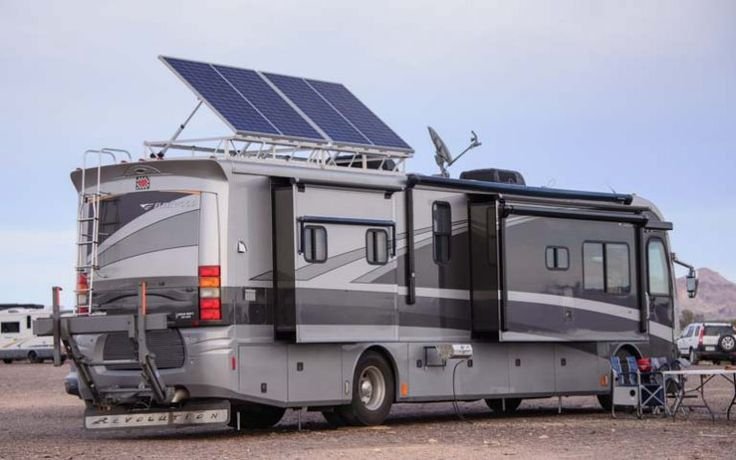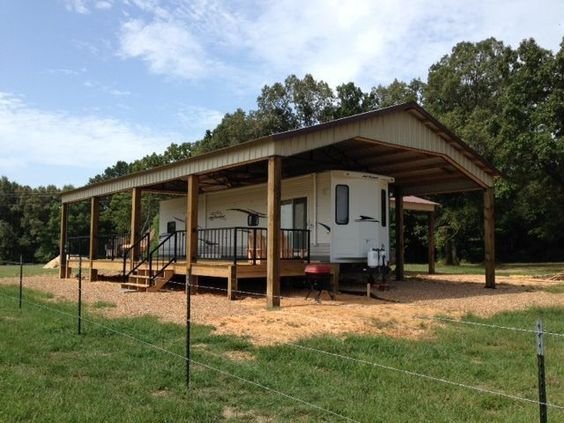Planning a family RV adventure involves more than just hitching up and hitting the road. Proper RV packing requires strategic planning that balances essential supplies with weight limits while ensuring every family member has what they need for comfort and safety throughout the journey. Many families discover this reality when they arrive at their destination only to find they’ve forgotten critical items or packed inefficiently, turning their dream vacation into a stressful experience.
The difference between a successful family RV trip and a chaotic one often comes down to preparation and organization. RV life presents unique challenges that don’t exist in traditional travel, from managing limited storage space to staying within weight restrictions while ensuring everyone’s needs are met. Families must consider everything from kitchen supplies and safety equipment to entertainment options and seasonal clothing, all while keeping items secure during travel.
This ultimate guide transforms the overwhelming task of packing your RV into a manageable system that works for families of all sizes. Whether planning a weekend getaway or an extended cross-country family RV adventure, understanding how to pack efficiently ensures more time enjoying the destination and less time searching for misplaced essentials or dealing with organizational disasters at the campground.
Must-Have RV Packing Lists for Unforgettable Family Trips
A comprehensive RV packing checklist prevents forgotten essentials that can derail family adventures. The right organizational approach combines universal necessities with personalized items that match your family’s specific needs and travel style.
The Ultimate Family RV Packing Checklist
Family RV trips require systematic organization across multiple categories. Essential kitchen items include plates, cups, utensils, can opener, coffee maker, and basic cookware. Families should pack cleaning supplies, paper towels, dish soap, and trash bags.
Safety equipment remains non-negotiable for any RV adventure. First aid kits, fire extinguisher, smoke detector batteries, and emergency contact information protect everyone on board.
Clothing requirements depend on trip duration and climate. Each family member needs enough underwear, socks, and sleepwear for the entire trip plus extras. Weather-appropriate outerwear and comfortable walking shoes prevent discomfort during outdoor activities.
Technology and entertainment keep children engaged during travel. Tablets, charging cables, portable games, and downloaded movies provide backup entertainment options when outdoor activities aren’t possible.
Personal care items include toothbrushes, toothpaste, medications, sunscreen, and any prescription items family members require daily.
Essential Items for Every RV Adventure
Certain RV essentials apply to every family trip regardless of destination or duration. Water hose, electrical adapters, and leveling blocks ensure proper RV setup at any campsite.
Tools and maintenance supplies prevent minor issues from becoming major problems. Screwdrivers, duct tape, WD-40, and spare fuses handle common RV maintenance needs.
| Category | Essential Items |
|---|---|
| Setup | Water hose, electrical cord, leveling blocks |
| Safety | First aid kit, flashlights, batteries |
| Maintenance | Basic tools, duct tape, spare fuses |
| Comfort | Bedding, pillows, camp chairs |
Outdoor gear enhances the camping experience for families. Folding chairs, outdoor rugs, and portable tables create comfortable outdoor living spaces. Grills or camp stoves enable outdoor cooking that children often find exciting.
Documentation includes RV registration, insurance papers, campground reservations, and emergency contact numbers stored in easily accessible locations.
How to Personalize Your Packing List for Your Family
Family-specific needs require customized packing approaches beyond standard RV camping essentials. Families with young children need diapers, baby food, car seats, and favorite comfort items like blankets or stuffed animals.
Teenagers require different considerations. Phone chargers, portable speakers, and personal entertainment devices keep older children content during long travel days.
Dietary restrictions or preferences affect food packing significantly. Families with food allergies must pack specialty items that campground stores might not carry.
Activity-based packing depends on planned destinations. Beach trips require swimwear, sunscreen, and beach toys. Mountain adventures need hiking boots, warm layers, and outdoor exploration gear.
Pet-owning families add another layer of complexity. Pet food, leashes, favorite toys, and vaccination records become essential items for RV adventures.
Storage solutions help families maximize limited RV space. Packing cubes organize clothing efficiently. Clear containers make finding items easier for children and adults alike.
Medication management requires special attention for family trips. Prescription medications, vitamins, and basic over-the-counter remedies should travel in organized, labeled containers with sufficient quantities for the entire trip duration.
Organizing and Packing Your RV Efficiently
Efficient RV packing requires strategic storage solutions and weight management techniques tailored to your specific RV type. The key lies in maximizing every inch of available space while maintaining proper weight distribution and easy access to essential items.
RV Storage Tips and Tricks
Vertical storage maximizes small space utilization in any RV layout. Install over-door shoe organizers for toiletries, cleaning supplies, and small items. Use magnetic strips on metal surfaces to hold knives, spices, and tools.
Under-bed storage containers work well for seasonal clothing and bulky items. Choose clear containers with wheels for easy access. Label everything clearly to avoid unpacking multiple containers.
Cabinet organization becomes critical in RV storage systems. Install shelf risers to double cabinet space. Use expandable drawer dividers for utensils and small items.
Overhead compartments should hold lightweight, infrequently used items. Store bedding, towels, and clothing in vacuum-sealed bags to reduce volume by up to 75%.
External storage bays require weatherproof containers for tools, outdoor equipment, and maintenance supplies. Group similar items together and secure everything to prevent shifting during travel.
Packing for Small and Large RVs
Class C motorhomes typically offer 60-80 cubic feet of storage space. Focus on multi-purpose items and collapsible gear. Every item should serve multiple functions or pack flat when not in use.
Small RVs require strict item limits. Choose lightweight camping chairs that stack. Select nesting cookware sets instead of individual pots and pans. Pack only essential clothing items.
Class A motorhomes provide 120-200 cubic feet of storage capacity. These larger RVs accommodate full-size appliances, extensive wardrobes, and recreational equipment without the space constraints of smaller units.
Larger RVs allow for comfort items like full-size towels, multiple cooking appliances, and entertainment systems. However, weight limits still apply even in spacious units.
Space-Saving and Weight Distribution Strategies
Weight distribution affects handling and safety in all RV types. Place heavy items low and centered over the axles. Keep weight within 10% of the RV’s center of gravity.
Load 60% of cargo weight in the front half of the RV. Store water and propane tanks according to manufacturer specifications. Weigh the RV when fully loaded to verify compliance with gross vehicle weight ratings.
Space-saving techniques include using vacuum storage bags for linens and off-season clothing. Install hooks and hangers on interior walls. Choose inflatable furniture that deflates for storage.
Store dishes and cookware in original travel positions with non-slip mats. Secure all loose items with bungee cords or cargo nets to prevent damage during travel.
Packing for RV Rental Versus Ownership
Rental RV packing requires bringing personal items only. Most rental companies provide basic cookware, bedding, and camping equipment. Check the provided inventory list before packing duplicates.
Focus on personal clothing, toiletries, food, and entertainment items for rentals. Bring familiar items like pillows and coffee for comfort. Pack cleaning supplies for the required return cleaning.
RV ownership allows for permanent storage solutions and personalized organization systems. Install custom shelving, drawer organizers, and storage accessories that match specific needs and preferences.
Owned RVs benefit from seasonal packing strategies. Store winter gear during summer trips and beach equipment during cold weather. Maintain permanent supplies of maintenance tools, spare parts, and emergency equipment.
Family Essentials: Packing for Comfort, Safety, and Fun
Creating a comfortable and safe environment for families requires specific bedding arrangements, comprehensive safety equipment, and engaging outdoor activities. These essential items transform an RV from basic transportation into a true home away from home.
Bedroom and Bedding Essentials
Quality sleep directly impacts family enjoyment during RV adventures. Pack fitted sheets specifically sized for RV mattresses, which often differ from standard home dimensions.
Bring lightweight blankets and comforters that compress easily for storage. Memory foam pillows or inflatable camping pillows save space while providing comfort. Pack extra pillowcases since they serve multiple purposes as laundry bags or makeshift ice packs.
Essential bedding items:
- RV-sized fitted and flat sheets
- Lightweight blankets and sleeping bags
- Comfortable pillows for each family member
- Extra pillowcases and towels
Consider blackout curtains or eye masks for children sensitive to early morning light. Pack a small nightlight for bathroom navigation without disturbing sleeping family members.
First Aid and Safety Gear
A comprehensive first aid kit addresses common camping injuries and medical needs. Include bandages, antiseptic wipes, pain relievers, and any prescription medications family members require.
Pack thermometer, tweezers, and instant cold packs for sprains or bruises. Include children’s medications like fever reducers and allergy treatments. Store emergency contact information and medical history for each family member.
Critical safety gear includes:
- Smoke and carbon monoxide detectors (battery-powered backups)
- Fire extinguisher rated for RV use
- Emergency exit tools and flashlights
- Personal flotation devices if near water
Keep a whistle and emergency phone charger accessible. Program local emergency numbers into phones before reaching remote areas.
Outdoor Gear and Activities
Outdoor gear extends living space beyond the RV interior. Pack folding camping chairs for each family member, creating comfortable outdoor gathering areas.
Board games and card games provide entertainment during weather delays or quiet evenings. Choose compact options like travel-sized games or digital versions on tablets.
Key outdoor equipment:
- Camping chairs and portable table
- Outdoor rugs or mats for clean entry
- Canopy or awning for shade and weather protection
- Portable grill or camp stove for outdoor cooking
Include sports equipment like frisbees, balls, or hiking gear appropriate for planned destinations. Pack bug spray and sunscreen for extended outdoor time.
Packing Your RV Kitchen: Food, Cooking, and Cleanup
A well-organized RV kitchen requires strategic selection of compact, multi-purpose supplies and careful food storage planning. Effective waste management and cleaning systems ensure a hygienic cooking environment throughout your family adventure.
Kitchen Essentials and Supplies
Basic Cookware and Tools Essential kitchen items include nested pots and pans that maximize storage space. A cast iron skillet serves multiple cooking methods. Collapsible measuring cups and mixing bowls save cabinet space.
Utensils and Serving Items Pack one complete utensil set per family member plus two extras. Include a sharp chef’s knife, paring knife, and cutting board. Can openers, bottle openers, and serving spoons are necessary basics.
Dishes and Storage Melamine or bamboo plates resist breaking during travel. Stackable bowls and cups minimize storage needs. Bring multiple water bottles and travel mugs for each person.
| Essential Items | Quantity | Storage Tip |
|---|---|---|
| Plates/Bowls | 6-8 each | Stack vertically |
| Pots/Pans | 3-4 pieces | Nest together |
| Utensil sets | 6-8 complete | Drawer organizer |
Small Appliances A coffee maker designed for RV use operates on 12V power. Electric kettles heat water quickly for multiple uses. Compact toasters or griddles work well for breakfast preparation.
Meal Planning and Safe Food Storage
Pre-Trip Planning Plan specific meals for each day to avoid overpacking. Focus on one-pot meals and simple preparations that require fewer kitchen items. Make shopping lists organized by meal to streamline grocery runs.
Dry Goods Organization Store flour, sugar, and spices in airtight containers labeled with contents and dates. Pasta, rice, and cereals fit well in rectangular storage boxes. Keep frequently used items in easily accessible locations.
Refrigerated Items Pack perishables in order of use, with first meals most accessible. Freeze meat portions individually for easier thawing. Use cooler packs to maintain temperature during travel days.
Pantry Staples Salt, pepper, cooking oil, and basic spices enable varied meal preparation. Peanut butter, bread, and eggs provide quick meal options. Canned goods offer backup meal solutions when fresh ingredients run low.
Cleaning and Waste Management
Dish Washing Setup Biodegradable dish soap protects campground septic systems. Collapsible wash basins save space when not in use. Quick-dry dish towels prevent moisture buildup in storage areas.
Surface Cleaning All-purpose cleaning wipes handle quick cleanups efficiently. Paper towels mounted under cabinets stay accessible but secure during travel. Microfiber cloths clean surfaces without scratching.
Waste Systems Small trash cans with tight-fitting lids contain odors effectively. Bring extra trash bags for longer stays between dump opportunities. Recycling bags help separate materials where facilities accept them.
Sponges and scrub brushes tackle different cleaning tasks. Rubber gloves protect hands during cleanup duties. Keep cleaning supplies in a caddy for easy transport to outdoor washing stations.
Frequently Asked Questions
Packing an RV for family adventures raises common concerns about space, safety, and organization. These answers address the most critical questions families face when preparing for their RV journey.
How do you efficiently pack an RV for a family trip?
Use labeled bins for each family member and pack clothes in complete outfits to streamline daily routines while maximizing available storage space.
What are the must-have essentials for RV family adventures?
Essential items include RV-safe toilet paper, holding tank chemicals, first aid kit, flashlights, leveling blocks, surge protector, and kid-friendly snacks for comfort and safety.
What tips can you offer for maximizing space in an RV?
Choose collapsible items like bins and camping chairs, use vertical storage with hooks and organizers, and pack multipurpose items that serve several functions.
What safety items should never be overlooked when packing an RV?
Fire extinguisher, first aid kit, emergency contact information, flashlights with extra batteries, and wheel chocks are non-negotiable safety essentials for every RV trip.
How should food and perishables be stored in an RV while traveling?
Store perishables in the refrigerator with secure latches, use airtight containers for pantry items, and pack frozen foods last to maintain proper temperatures during travel.
What is the best way to pack clothing and personal items for an extended RV journey?
Pack clothes in weather-appropriate layers, use packing cubes to organize items by family member, and keep frequently used toiletries easily accessible in bathroom storage areas.




